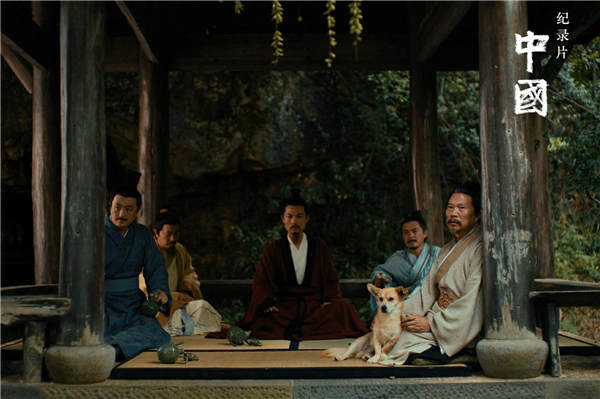

"It's like we are taking cameras back to more than 1,000 years ago," explains Li.
"We can film the scenes where these ancient people portrayed by the cast members drink water, eat food, gaze at the starry sky, chat with each other, stare blankly or engage in other common things involved in people's daily routine. That may strengthen the documentary's veracity."
With no conversation, the actors and actresses have to try to think of themselves in the roles and reproduce the scenes of ancient people's reading, writing, arguing or gathering in a place.
"That requires the cast to step out of their comfort zone in acting," Li says, adding that veteran actors and actresses from Beijing People's Art Theater and the National Theater of China were invited to portray the people from earlier times.
Zhao Rui, a teacher with the school of journalism and communication at Minzu University of China, says the re-enactment of historical scenes in the documentary gives characters enough space to express their feelings, which helps to promote development of the plot and tugs at the heartstrings of the audience.
The documentary was shot in ultra high-definition 8k format, with most scenes filmed in slow motion. Japanese musician Shigeru Umebayashi composed the documentary's euphonious background music and Chinese photographer Luo Pan also took part in the production to ensure its visual aesthetic standard.
Former CCTV host Zhou Tao provides a female voice-over in measured tones for the documentary.